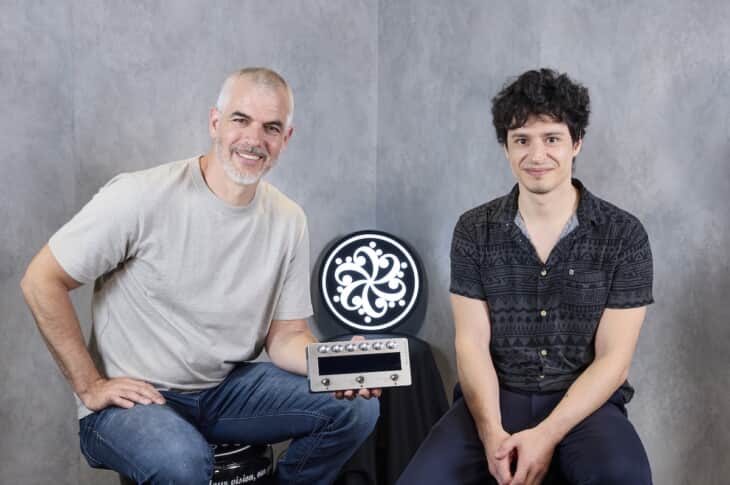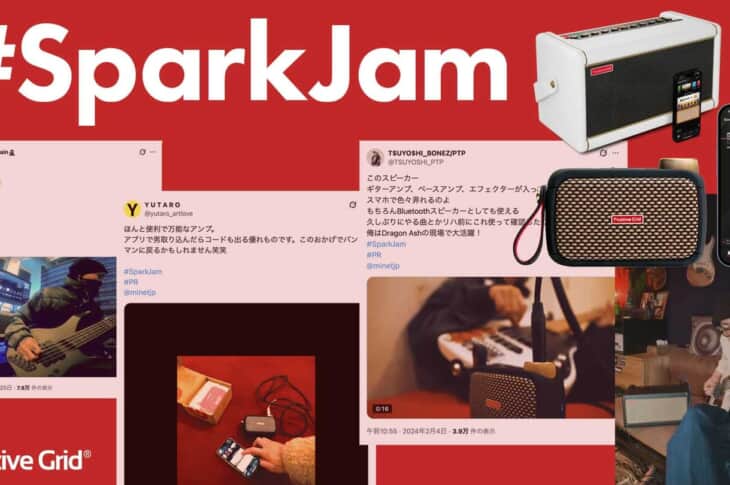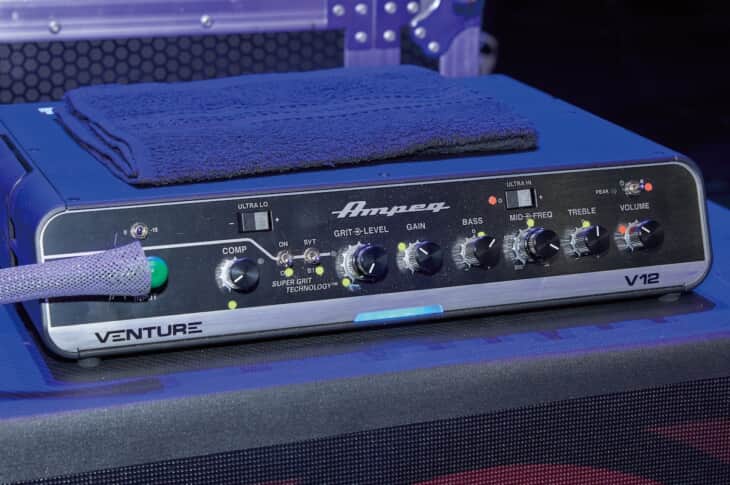GEAR
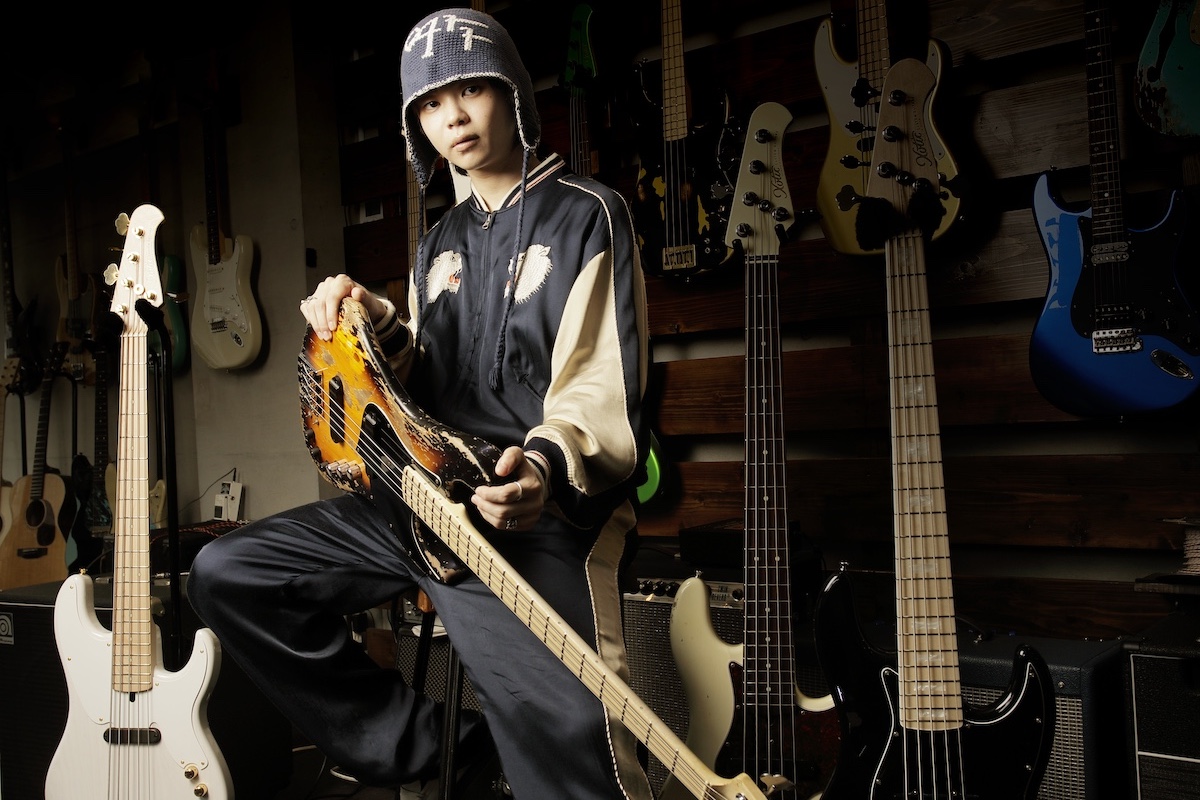
UP
Sota Morimitsu’s In-Depth Review of 4 Xotic Bass Models!
- Text:Makoto Kawabe
- Photo:Takashi Hoshino
Since its founding, Xotic has been a cornerstone of the bass scene with its lineup of highly original products. The brand’s exceptional quality and sound continue to captivate bassists worldwide, from emerging young talents to legendary veterans.
This time, we’ve selected four of Xotic’s bass models for an in-depth review. We will thoroughly examine the capabilities of each model through a performance review by Sota Morimitsu, an Xotic user himself, who is active with his band dawgss and also a support bassist for YOASOBI.
XTB-1T 5st
A unique, modern model that blends vintage and contemporary styles.
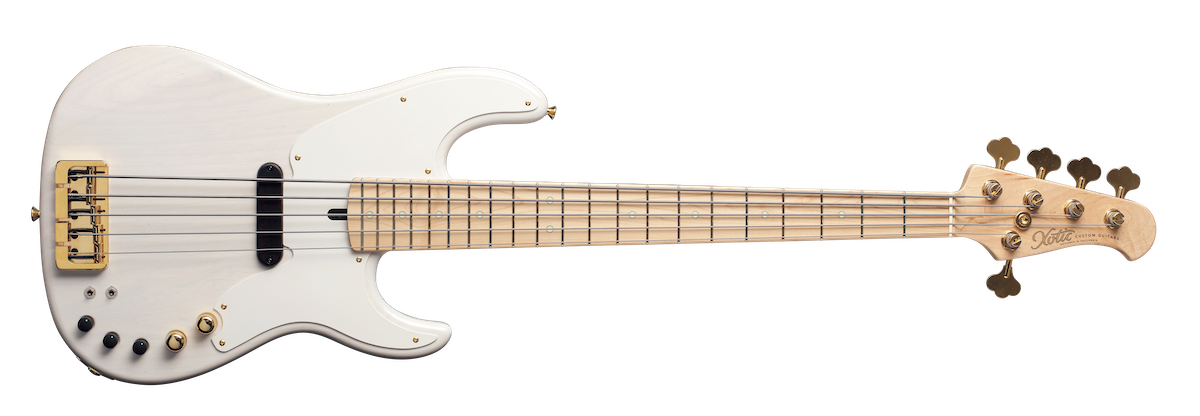
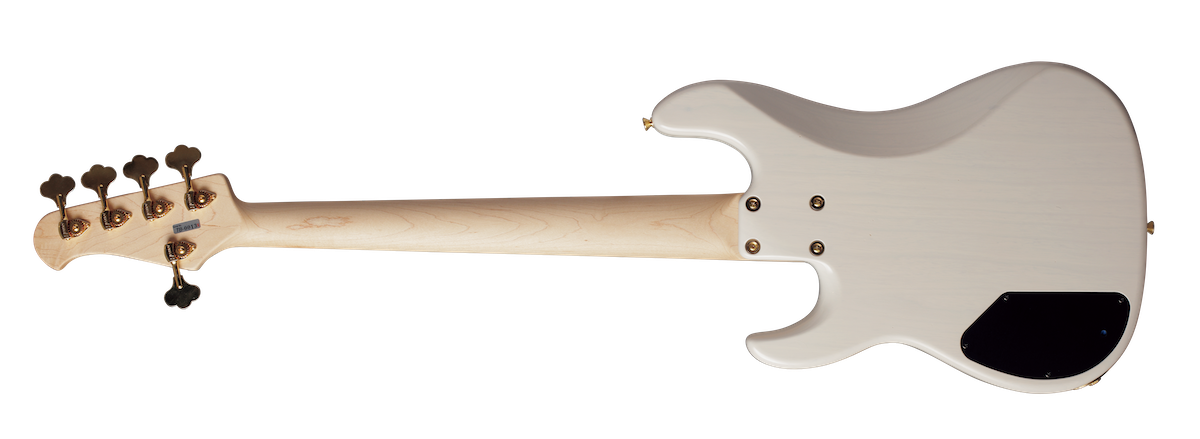
This is Xotic’s latest model, released in 2025, that takes a classic 1954-style bass as its inspiration and elevates it with Xotic’s unique modern sensibilities. It features an ash body, maple neck and fingerboard, and a White Blonde finish with gold hardware and a light-aged treatment that simulates a subtle, aged look. The XTB-designed single-coil pickup uses the same wood cover found on the “1T” series. Despite having just one pickup, it offers a wide range of tonal expressions thanks to its active 3-band EQ, which lets you select between treble and middle frequencies.
◎Specifications
●Body: Ash●Neck: Maple●Fingerboard: Maple●Scale: 34 inches●Frets: 21●Pickup: Original OPB●Preamp: Xotic Preamp●Controls: Volume (with push/pull active/passive switch), Tone, Bass, Mid, Treble, Mid-Frequency Selector (400Hz/800Hz), Treble-Frequency Selector (6kHz/12kHz)●Tuners: Hipshot LIC Ultralite●Bridge: Hipshot B Style Brass●Color: White Blonde Light Aged
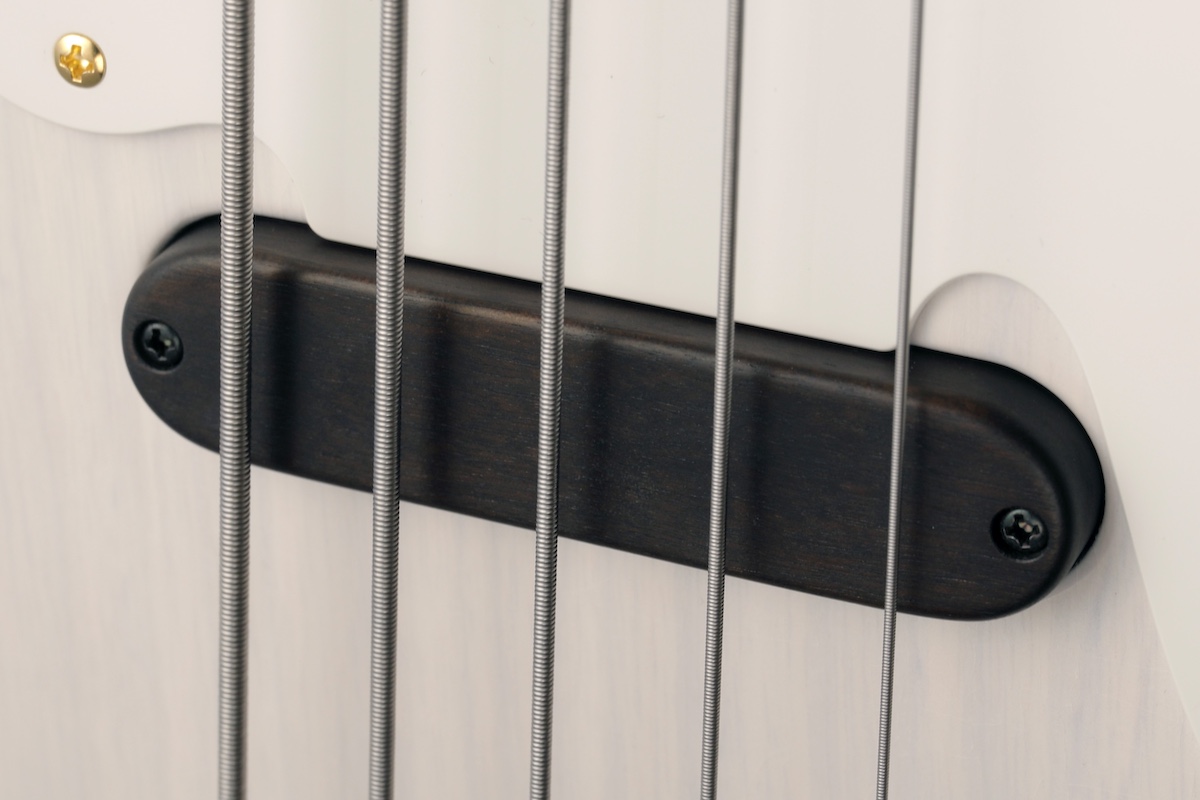
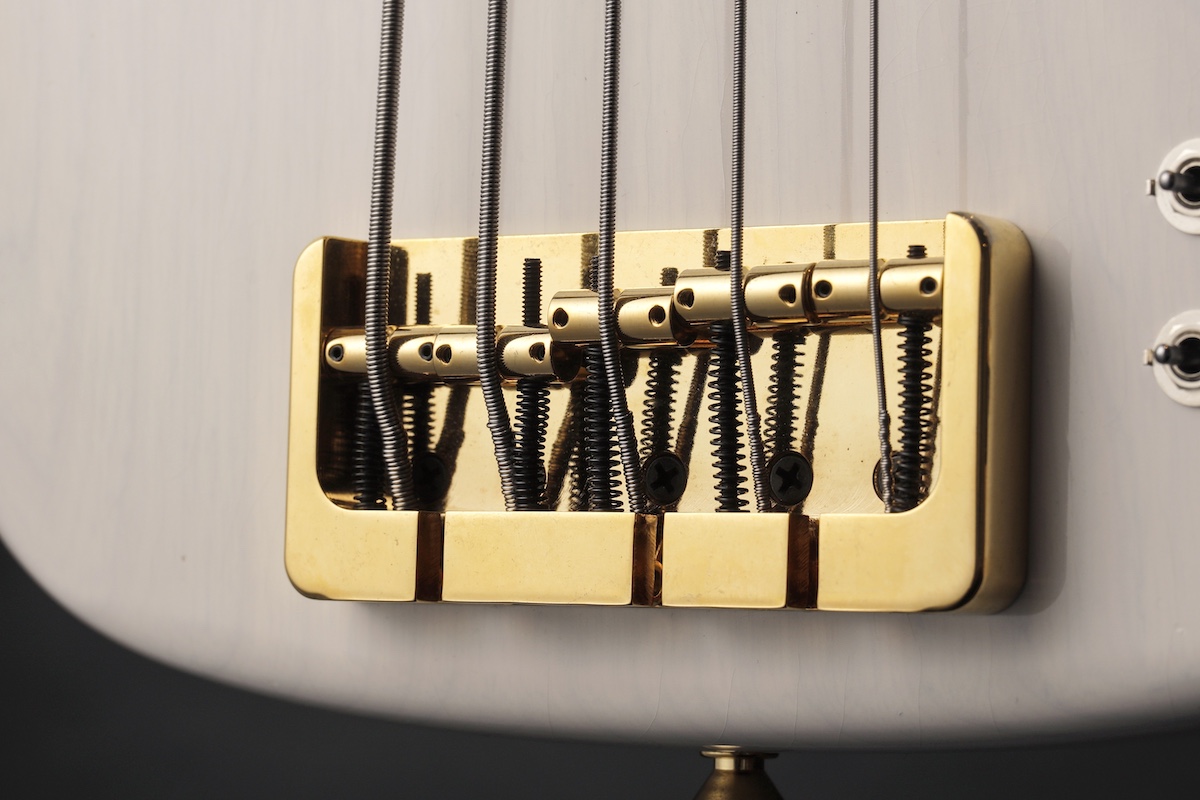
Morimitsu’s Review
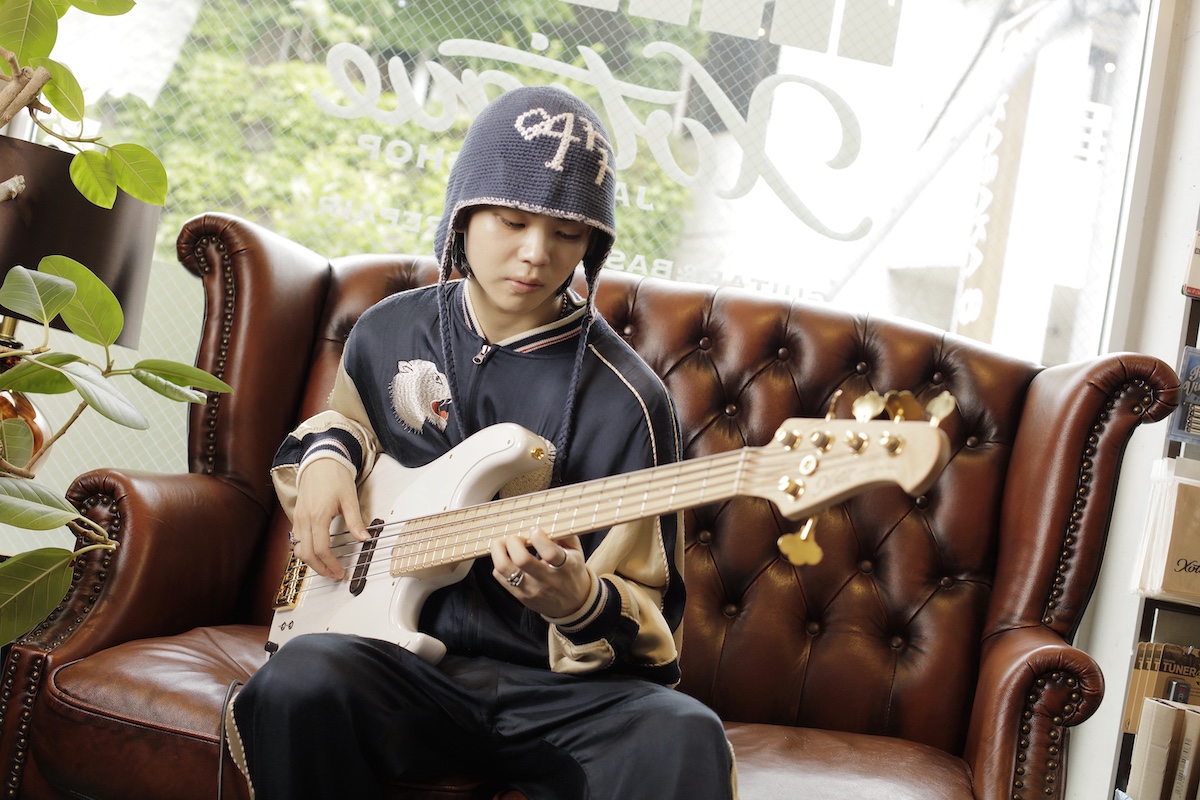
The tone for soul and R&B, which are my roots.
It’s got a really gritty sound, which is a funny contrast to its flashy look. Depending on the mid-range settings, you can get a tone that’s closer to a passive bass, but there’s a pretty big difference in character between the passive and active modes. Even though the preamp EQ is the same as the other 1T series, it feels like it has a completely different effect. I prefer the 6kHz treble setting—it feels like it’s working in a frequency range that really suits this instrument. It gives me that soulful, R&B tone that’s at the root of my playing, but it also has a great presence that will cut through a mix. This is an instrument I’d want to play and hear in genres where the instrument’s natural tone can really shine.
XJ-1T 4st
A high-performance 4-string model with a stunning appearance.
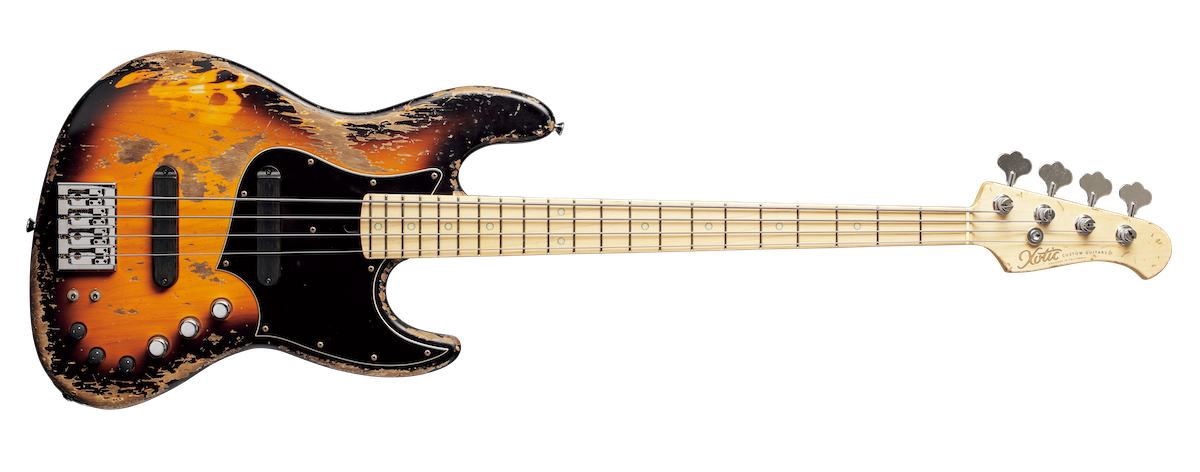
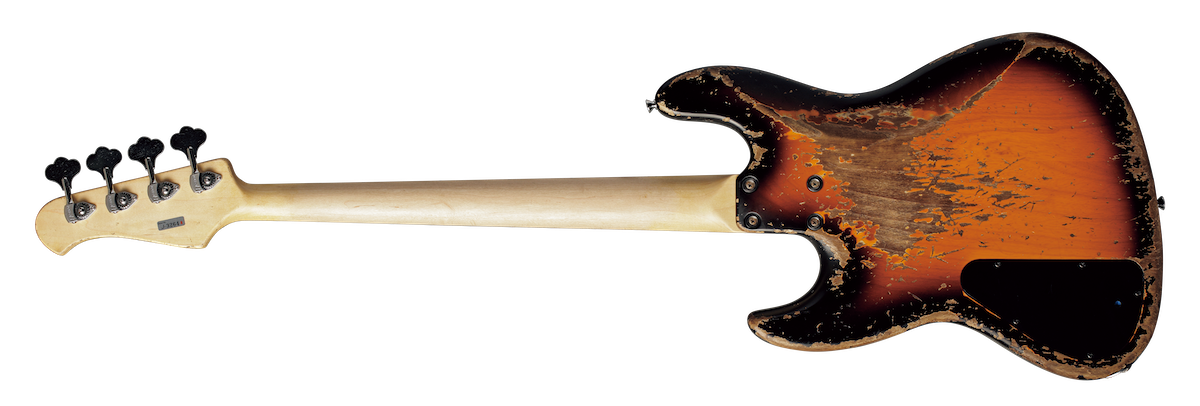
This 4-string, 2-Tone Sunburst model makes a powerful statement with its super-heavy-aged finish, giving it the look of an instrument that’s been played for decades. Its specs—an ash body with a maple neck and fingerboard—are reminiscent of a 1970s model, and the general sound profile reflects that. However, it is undeniably a modern instrument, with excellent playability and a wide range of tonal options that showcase the best of Xotic today. A major highlight is its versatile control system, featuring the “1T” series’ standard 18V active 3-band EQ and the ability to switch the pickup between series and parallel.
◎Specifications
●Body: Ash●Neck: Maple●Fingerboard: Maple●Frets: 21●Scale: 34 inches●Pickups: 2x Raw Vintage JB 4st●Preamp: Xotic Preamp●Controls: Front Volume (with push/pull active/passive switch), Rear Volume (with push/pull parallel/series switch), Tone, Bass, Mid, Treble, Mid-Frequency Selector (400Hz/800Hz), Treble-Frequency Selector (6kHz/12kHz)●Tuners: Hipshot LIC Ultralite●Bridge: Original●Color: 2-Tone Sunburst Super Heavy Aged
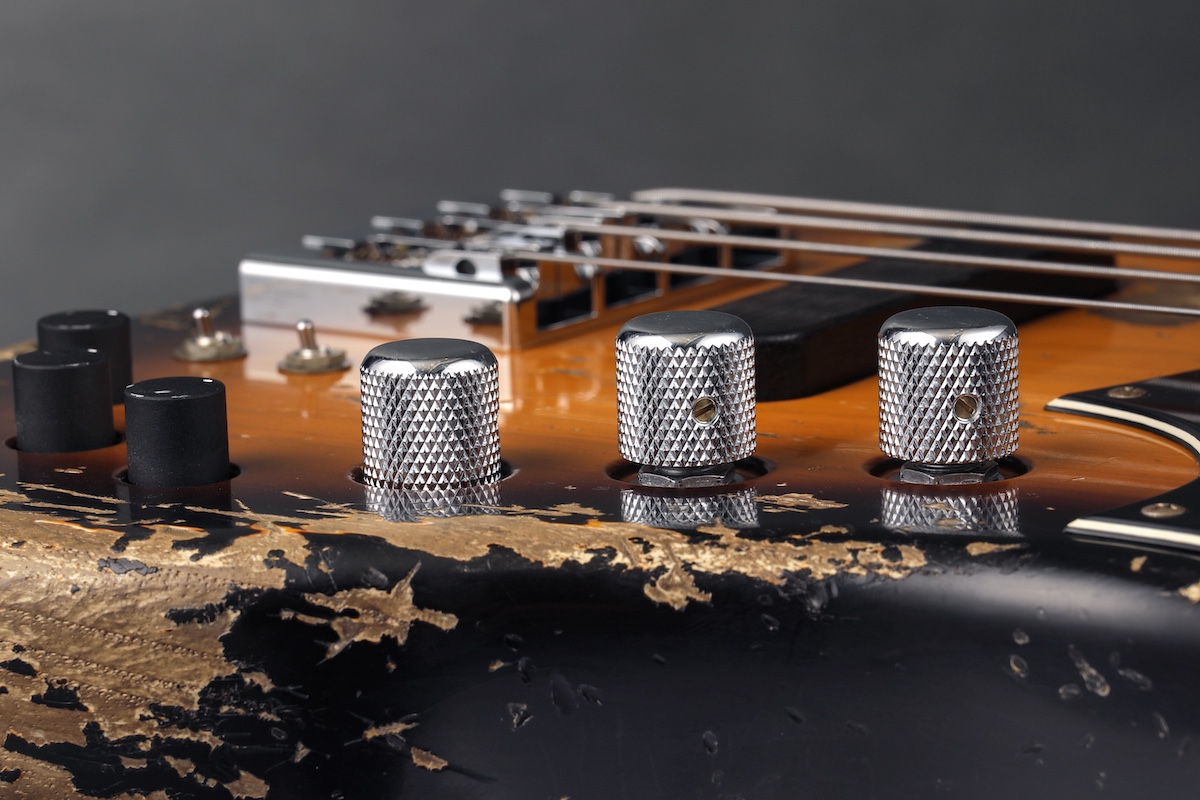
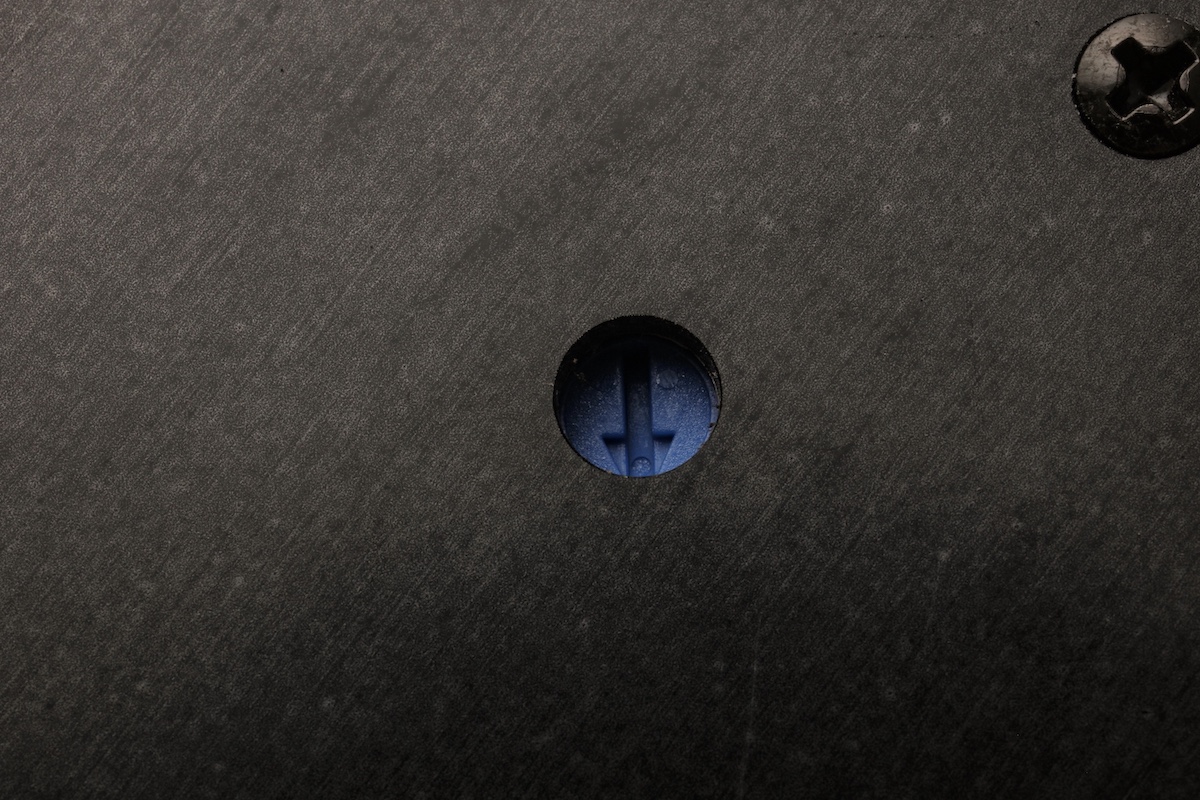
Morimitsu’s Review
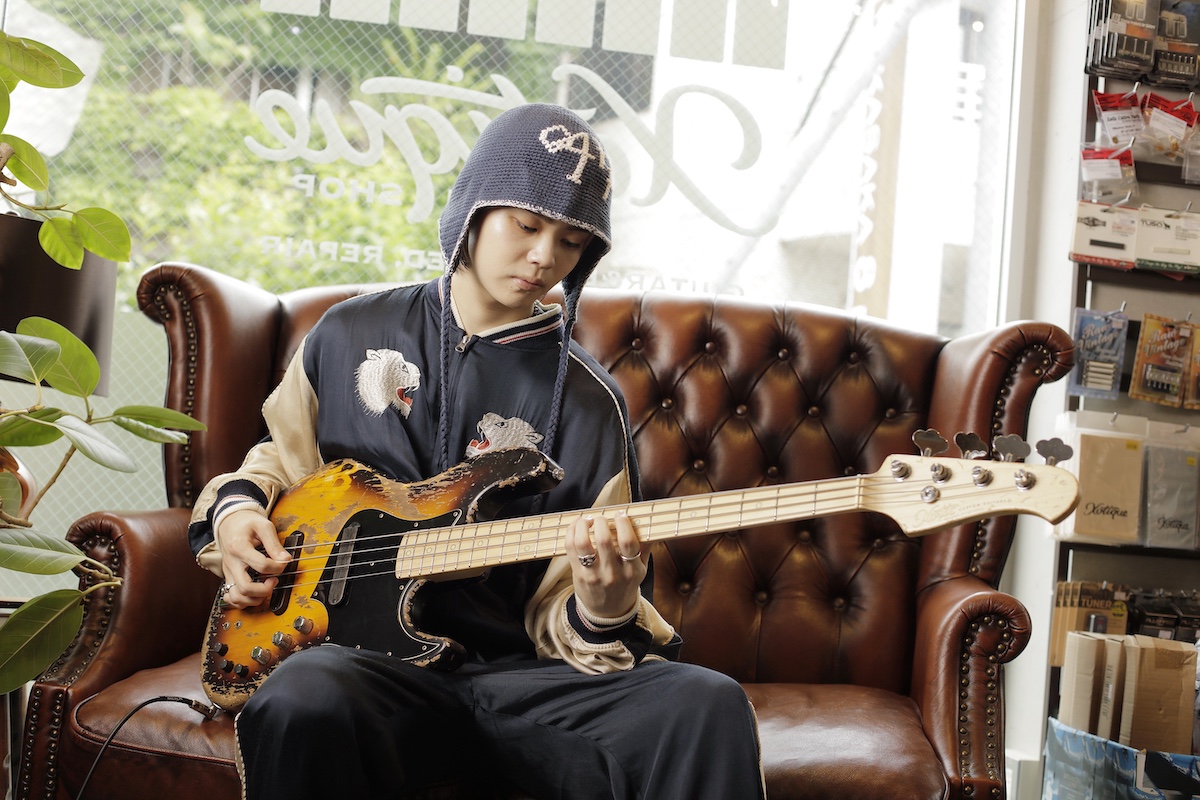
No matter where you play on the fretboard, you get the same beautiful tone at a consistent level.
This bass has a natural compression, so no matter where you play on the fretboard, you get the same beautiful tone at a consistent level. It doesn’t get muddy in the frequencies that would normally sound indistinct on other basses, so I could use it live even with a little bit of overdrive… (He actually tries it with an effect pedal). Yep, it feels totally natural. The passive mode has a great, natural sound, but the active mode is excellent because I can make subtle corrections with the EQ right at my fingertips. A pristine-looking instrument can sometimes feel like “me and the instrument” (laughs), but I really love how a heavily-aged one feels like it’s already a part of me. I think it also has an impact on the tone.
XJ-1T 5st
An iconic 5-string active JB with versatile controls.
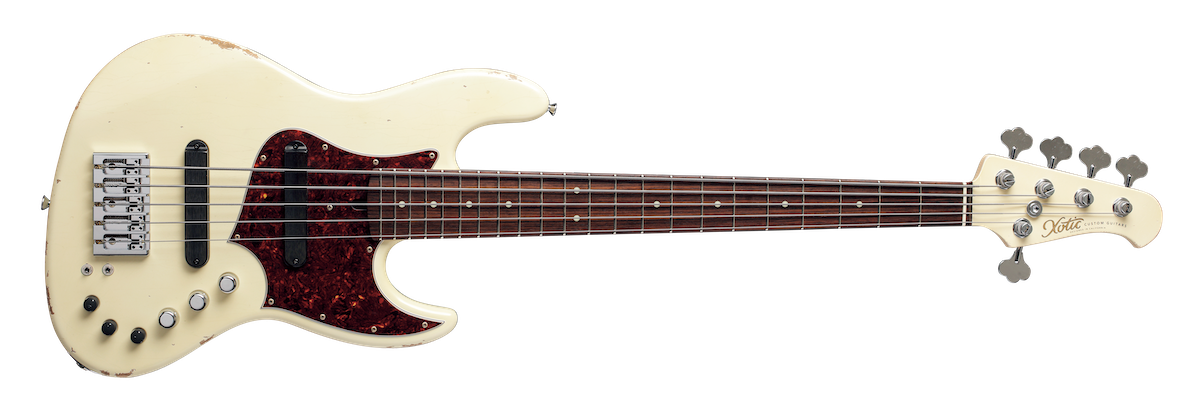
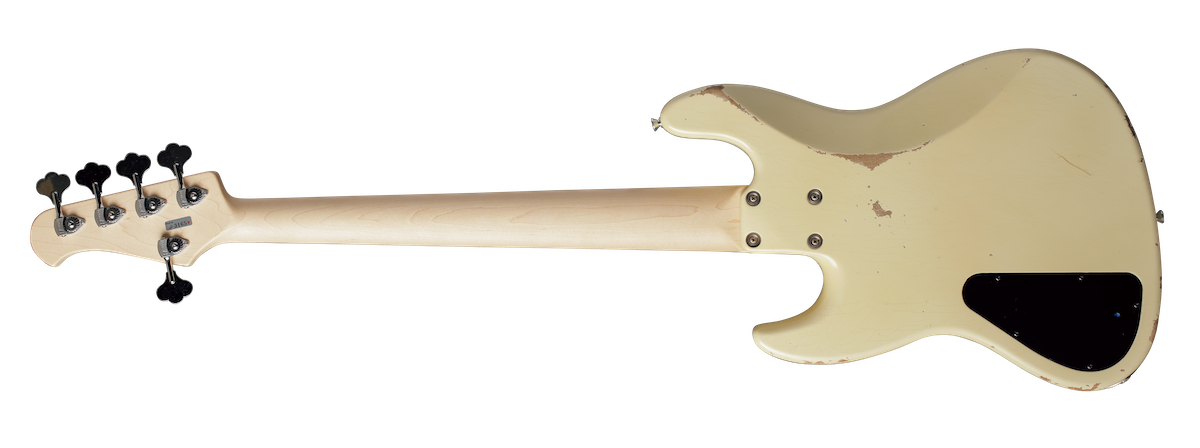
Now establishing itself as the “industry standard 5-string active model,” the XJ-1T 5st is a favorite among countless professional and amateur bassists. This specific model features an alder body, maple neck, and rosewood fingerboard, with a Vintage White finish and matching headstock. It has a medium-aged treatment that gives it a moderate, worn-in look. The hardware is also lightly aged, but without any damage that would hinder playability or adjustments. A unique feature is that while XJ-1T 4-string models and all other current Xotic basses have 21 frets, only the XJ-1T 5- and 6-string models come with 22 frets.
◎Specifications
●Body: Alder●Neck: Maple●Fingerboard: Rosewood●Frets: 22●Scale: 34 inches●Pickups: 2x Raw Vintage JB 5st●Preamp: Xotic Preamp●Controls: Front Volume (with push/pull active/passive switch), Rear Volume (with push/pull parallel/series switch), Tone, Bass, Mid, Treble, Mid-Frequency Selector (400Hz/800Hz), Treble-Frequency Selector (6kHz/12kHz)●Tuners: Hipshot LIC Ultralite●Bridge: Original●Color: Vintage White Medium Aged
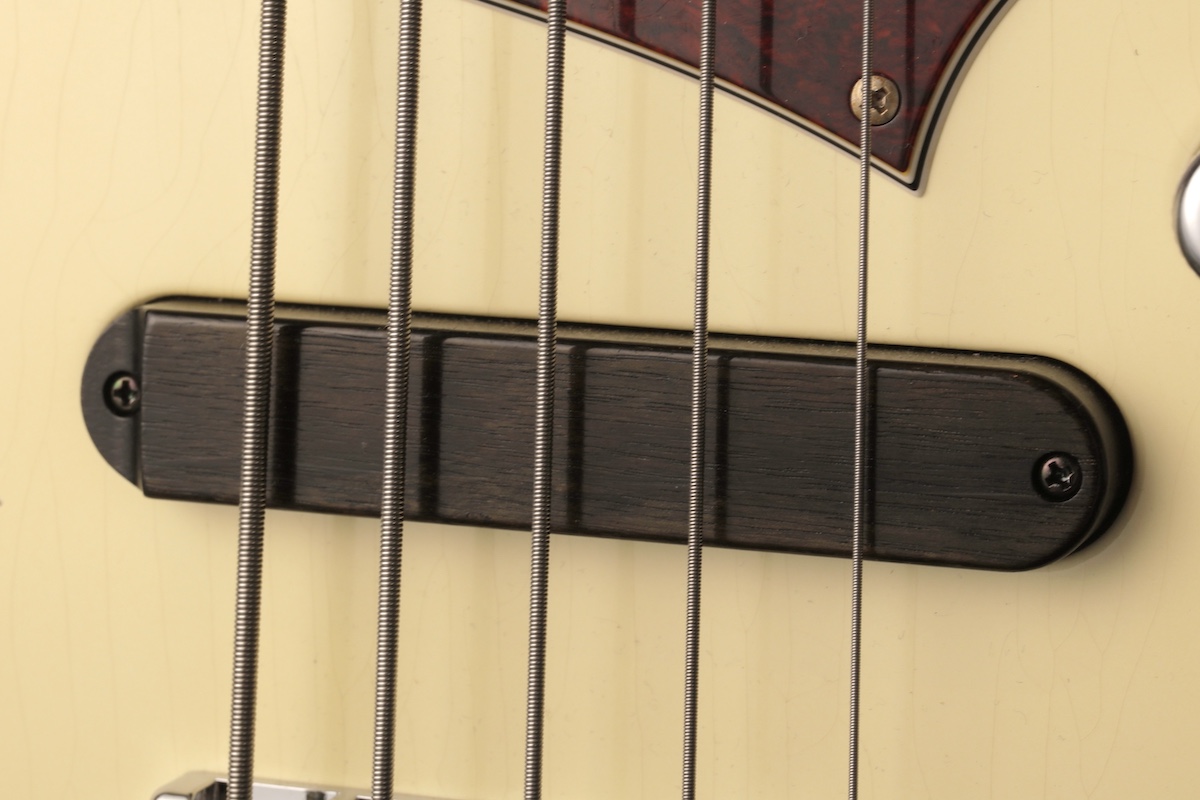
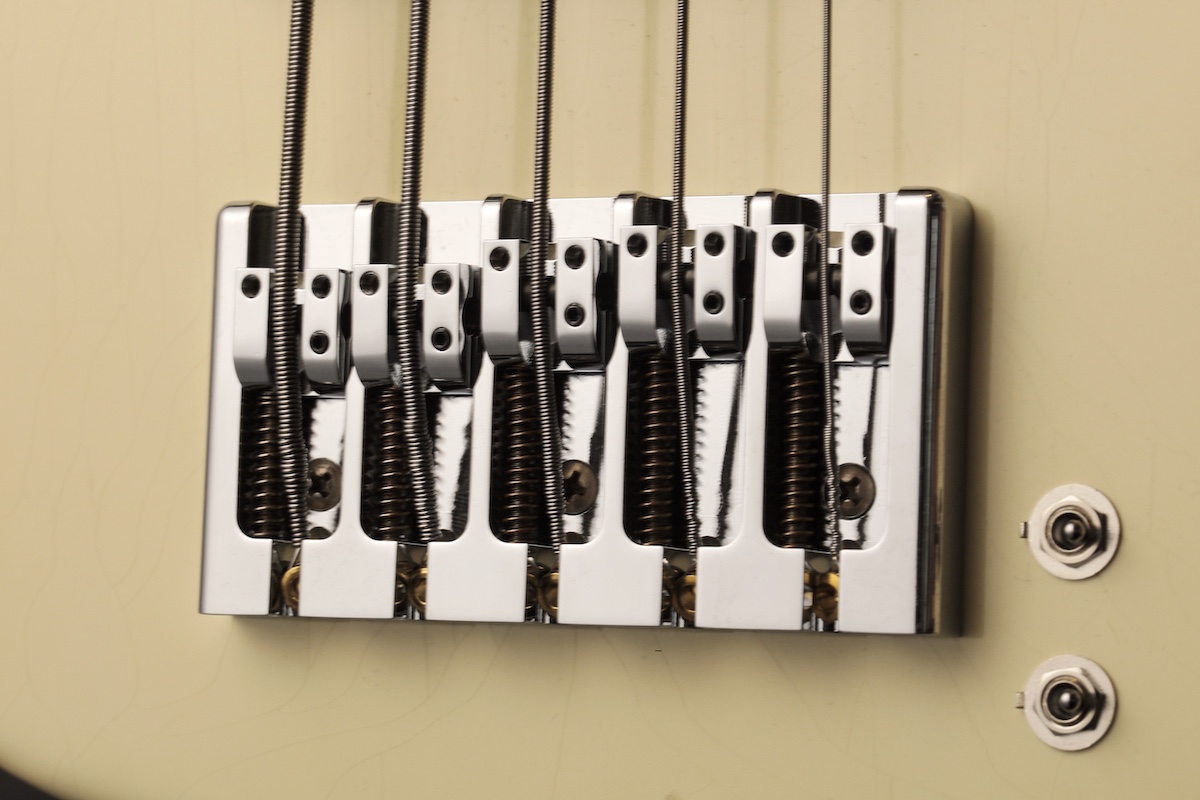
Morimitsu’s Review
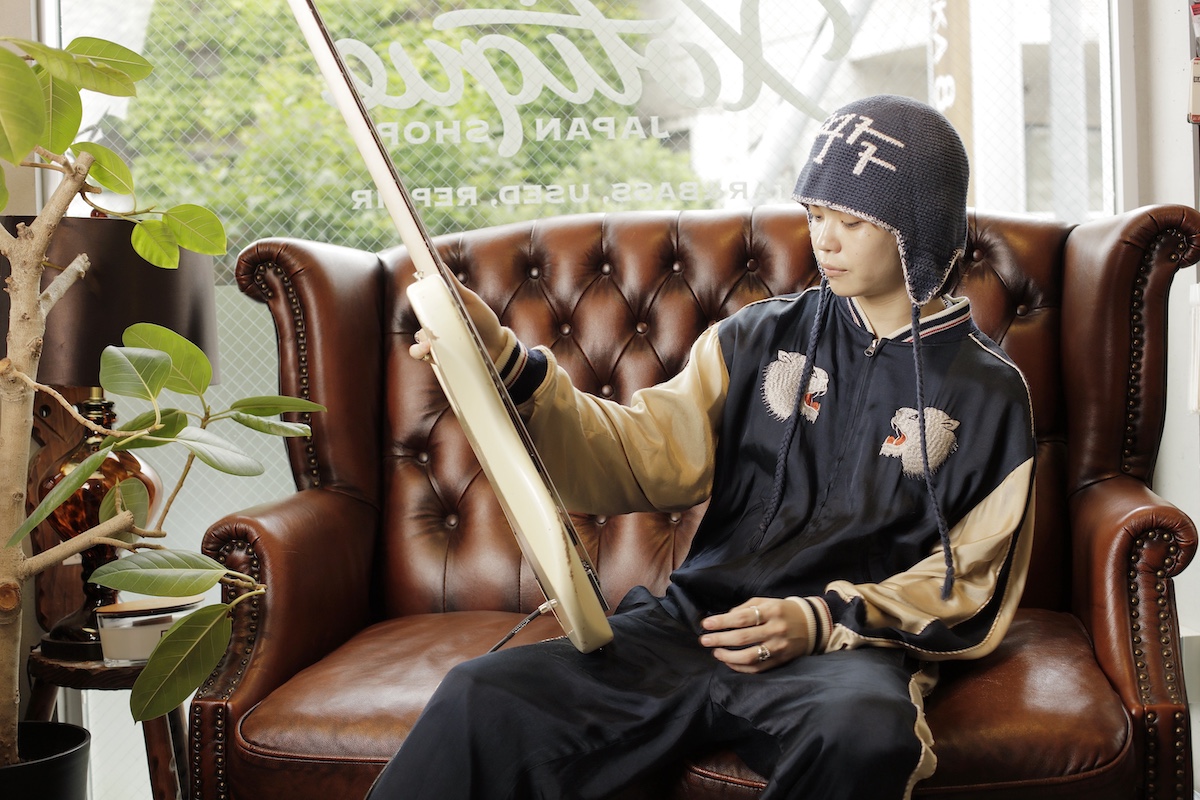
The low B string’s low end has a great, full sound without being boomy.
There’s a depth and softness to the tone of a rosewood fretboard—it lowers the center of gravity in a good way. I use an octave pedal a lot, so I’ve always felt like I can get as much low end as I want. Lately, I’ve been focusing on the high end, and even with the rosewood fretboard, this bass has a great high-end presence. And the low B string’s low end has a great, full sound without being boomy. Even in the higher registers, the low end is still there, and when I pluck the strings, the sound stays focused and full. In passive mode, just the front pickup alone gives you that classic PB-like punchy tone that still holds together without sounding scattered.
XJ-Core 5st(Active)
A unique masterpiece woven from cross-border technology.
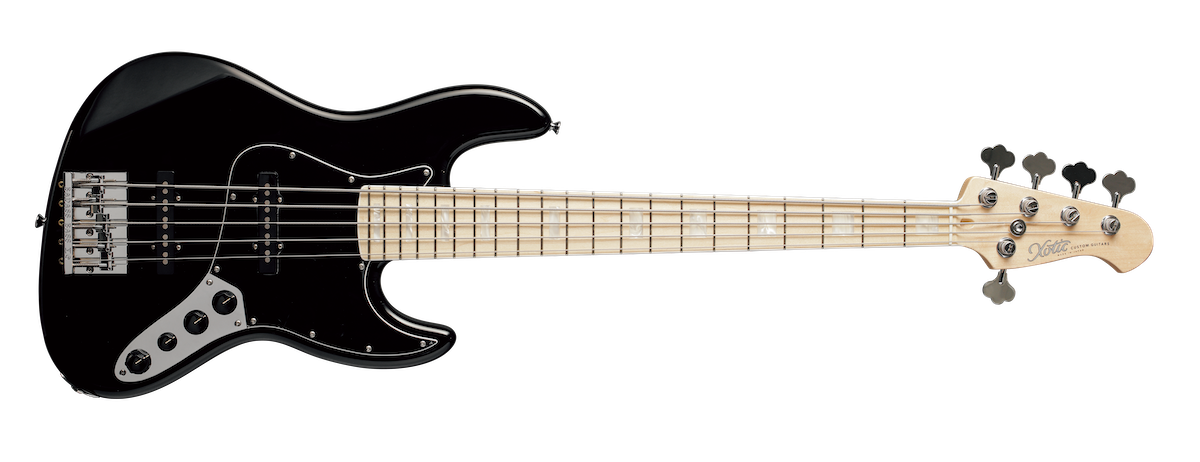
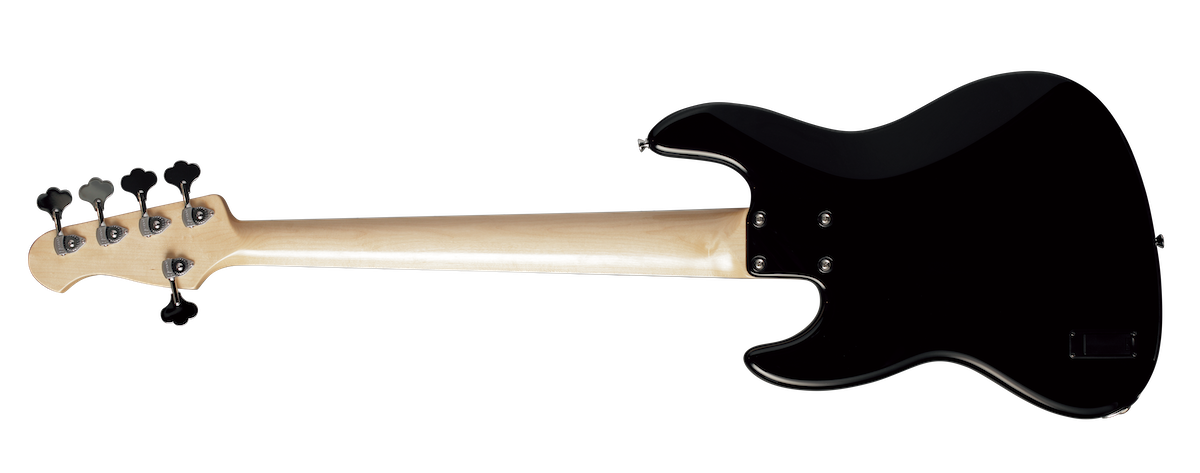
The XJ-Core is the first model in the “California Core” series, where the core components of the instrument—the “CORE”—are sourced from the United States, while the rest of the process, including painting, assembly, and final adjustments, is done in Japan. This particular model features a meticulously selected set of parts, including an ash body and maple neck and fingerboard processed in the U.S., Lindy Fralin J-style pickups, a Bartolini TCT active preamp, a Leo Quan Badass V bridge, and Hipshot Ultralite tuners. It is a masterpiece that combines reliable materials, highly-regarded modern parts, and superb Japanese craftsmanship.
◎Specifications
●Body: Ash●Neck: Maple●Fingerboard: Maple●Frets: 21●Scale: 34 inches●Pickups: 2x Lindy Fralin JB 5st Custom●Preamp: Bartolini TCT●Controls: Volume, Balancer, Passive Tone (with push/pull active/passive switch), Treble/Bass (stacked knob)●Tuners: Hipshot LIC Ultralite●Bridge: Leo Quan BADASS V●Color: Black
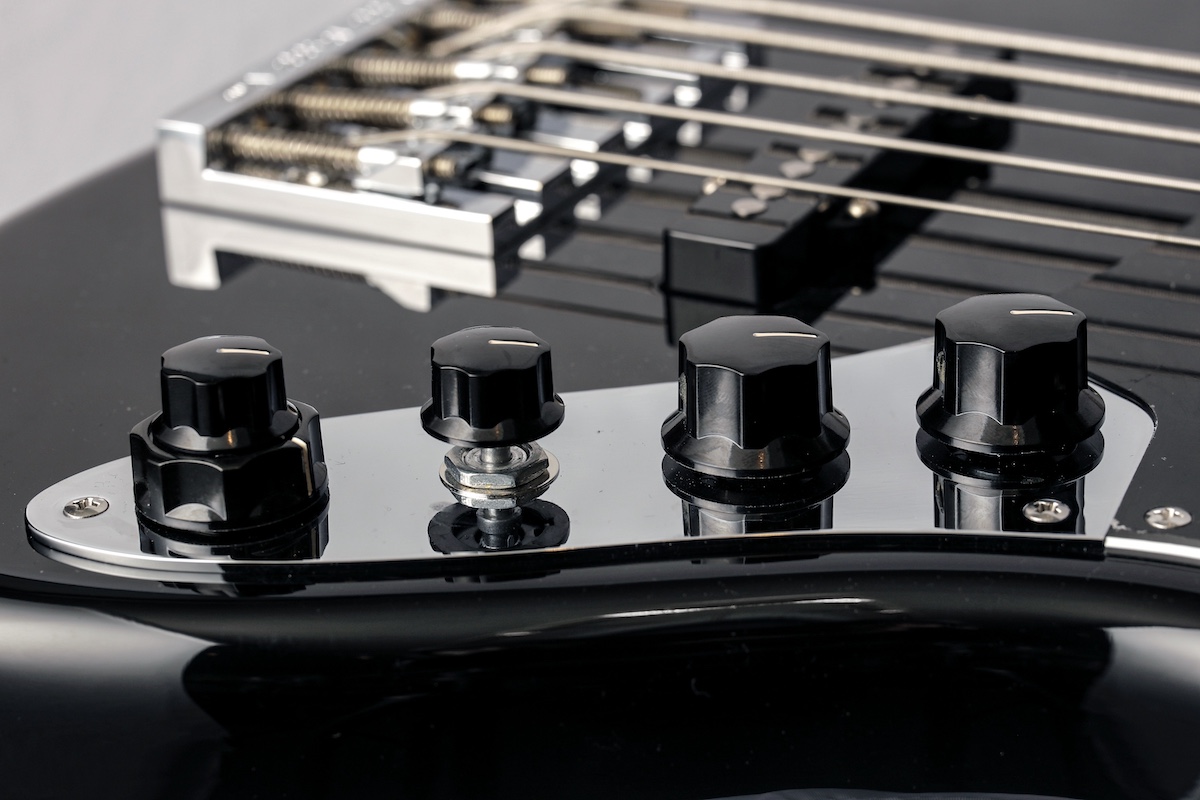
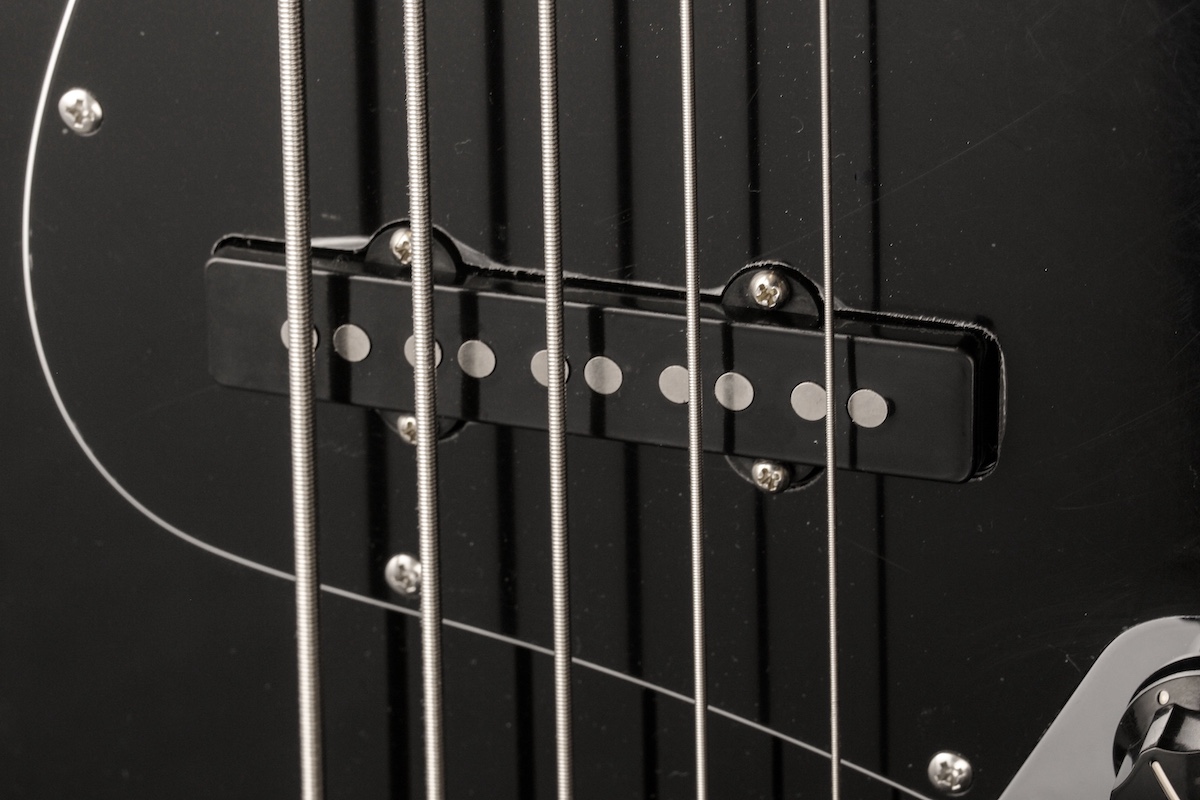
Morimitsu’s Review
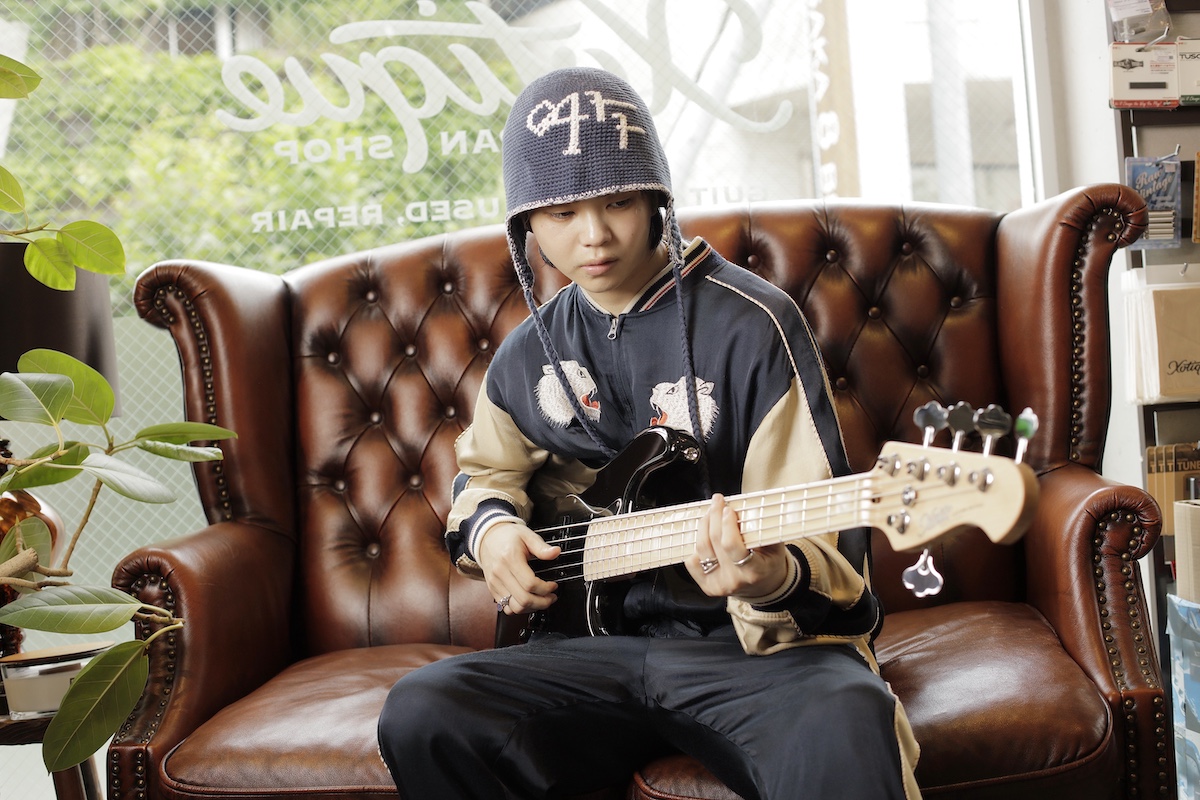
I think this instrument has a tone that can be a main character or a supporting player.
This is completely different from the passive XJ-Core I usually use (laughs). The low-end feel of the low B string is incredible. Ah, but when I switch it to passive mode, the tone becomes similar. The EQ is very powerful, but it’s great that it doesn’t get saturated. Overall, the tone seems well-suited for a large venue. When I play the first string with a pick, the sound usually tends to either get lost or stick out too much, but this one has a great, solid presence. I feel like I could create a great sound without any EQ pedals; it has a polished, finished tone that sounds like an engineer has already edited it. The bass has a strong and commanding presence. I think it’s an instrument with a tone that can be a main character or a supporting player.
Total Review
We asked Sota Morimitsu for his impressions of the Xotic bass models after he finished the test play.
“An instrument that’s ready to take on the music of the future.”
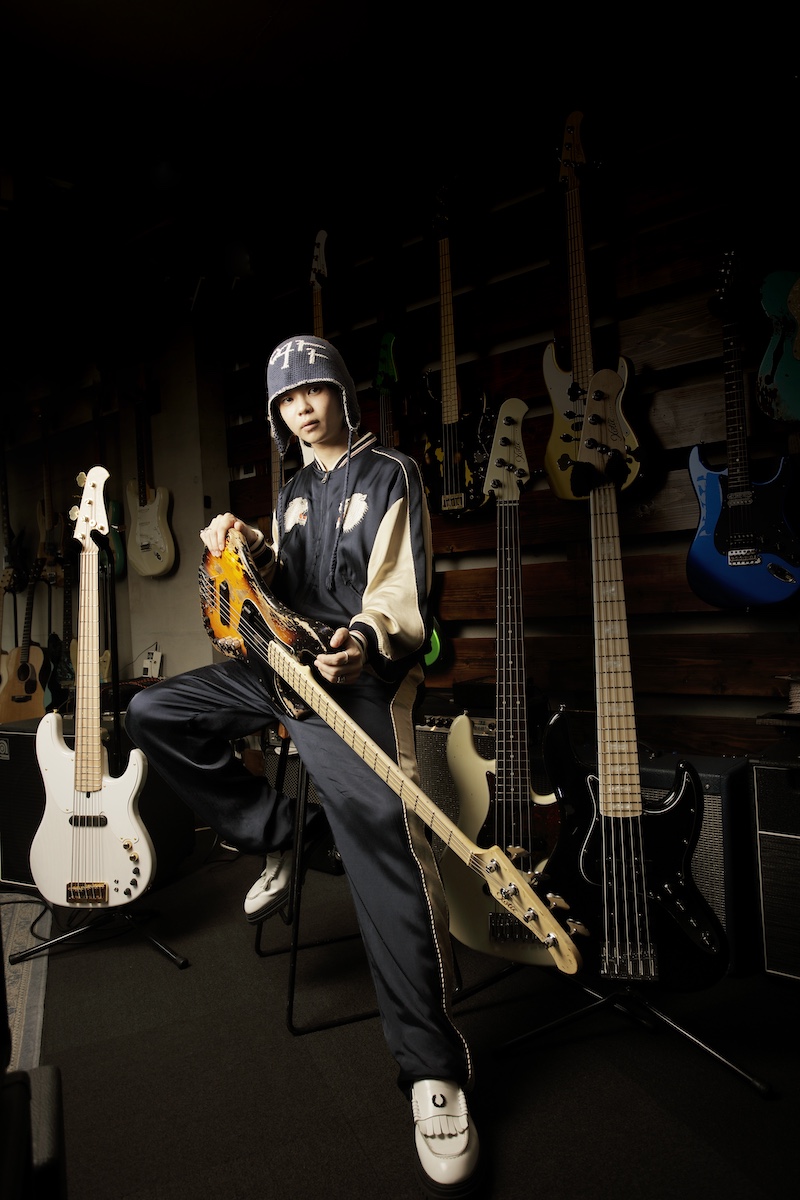
Sota Morimitsu●Born in Hiroshima Prefecture in 1998, he started playing bass in the fourth grade, influenced by Mitsuru Sutoh. At 18, he moved to Tokyo to begin his professional career. He has since provided bass support for various artists, including YOASOBI, and is also actively involved in his solo project, dawgss.
X
The first high-end instrument I ever bought as a high school student was a maple-fretboard XJ-1T 5st. It’s how I learned what a good bass sound was and it set the standard for me. I bought it online without even trying it, and I think I was able to do that because of Xotic’s product consistency.
I also use vintage instruments for recordings, but I don’t feel much of a difference between them and Xotic instruments. Unlike other modern passive basses, it feels like a vintage instrument that was just made into a 5-string, and I think that’s a huge strength. The XJ-Core 5st I’m currently using is exactly like that—it fits the musicality of my own projects perfectly. Even as a passive bass, it has a core to its sound and a unique high-end presence that you can’t get with other 5-string basses. In dense musical environments, like with a lot of sequences, you really need an active bass with full-range frequencies. But for sessions or gigs where I want to hear each instrument clearly, the XJ-Core is much easier to use.
What I call a “soft compression,” or a well-balanced sound, is an absolute must for my playing. Xotic basses are great because you can play them aggressively and they sound aggressive, but you can also play them delicately and they respond in kind—and they never go overboard. It’s not just fret buzz; there’s a certain “jingle” from the string-to-fret friction that I think contributes to Xotic’s unique, well-defined sound. Lately, I’ve been shaping my tone around overdrive pedals, and every instrument I played today paired well with them. The core bass tone and the overdrive don’t sound separate; they ring out together.
I think all bassists, including myself, have a longing and sense of security with the sound of vintage and old instruments. After playing Xotic basses again today, I feel that while they have that classic tone, they also have a strong character and are incredibly easy to play. To me, they are “instruments ready to take on the music of the future.” The relationship I have with Xotic allows me to try a lot of different things, and I truly feel like it’s a brand with which I can create the future of the bass.
! function(d, s, id) { var js, fjs = d.getElementsByTagName(s)[0]; if (!d.getElementById(id)) { js = d.createElement(s); js.id = id; js.src = “https://www.digimart.net/app/public/js/widgets.js”; fjs.parentNode.insertBefore(js, fjs); } }(document, “script”, “digimart-wjs”);
Currently available is the August issue of Bass Magazine, featuring a 15-page special on Xotic!
The extensive feature dives into the true value of the brand, looking back at its history, and includes interviews with professional bassists who use Xotic, as well as a report on their production facilities.
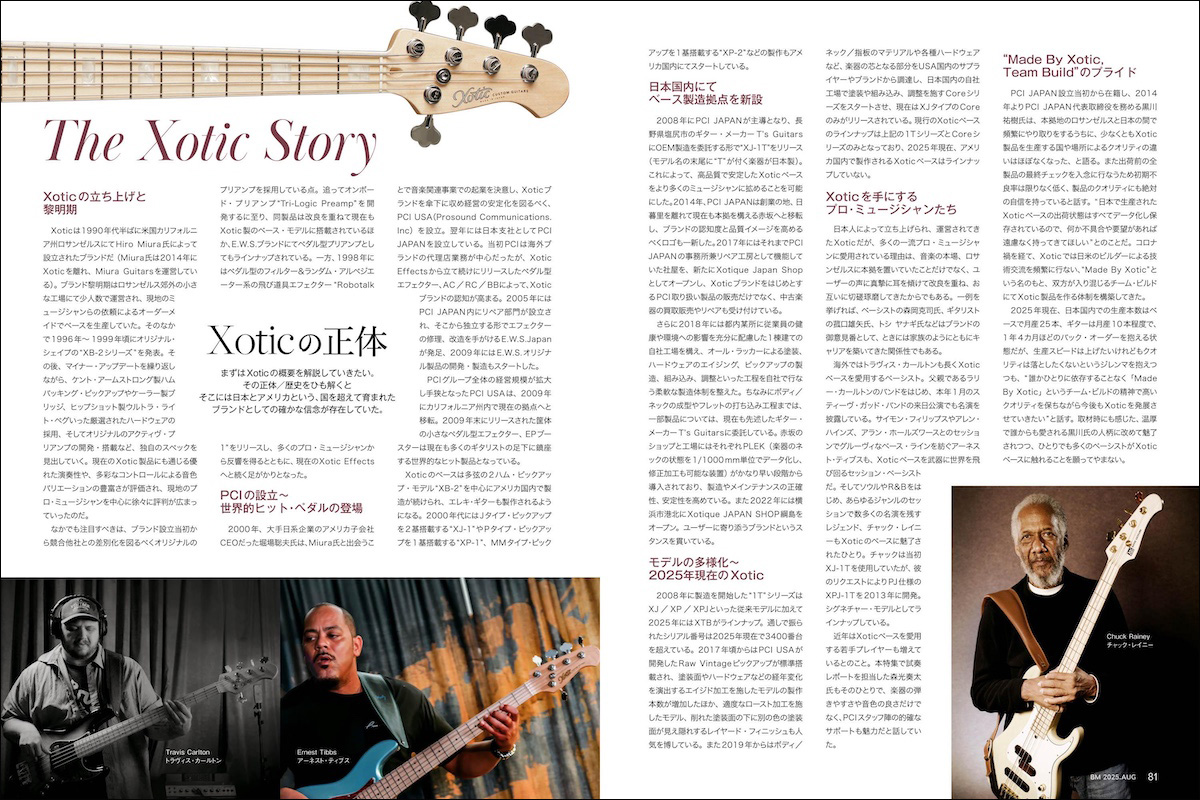
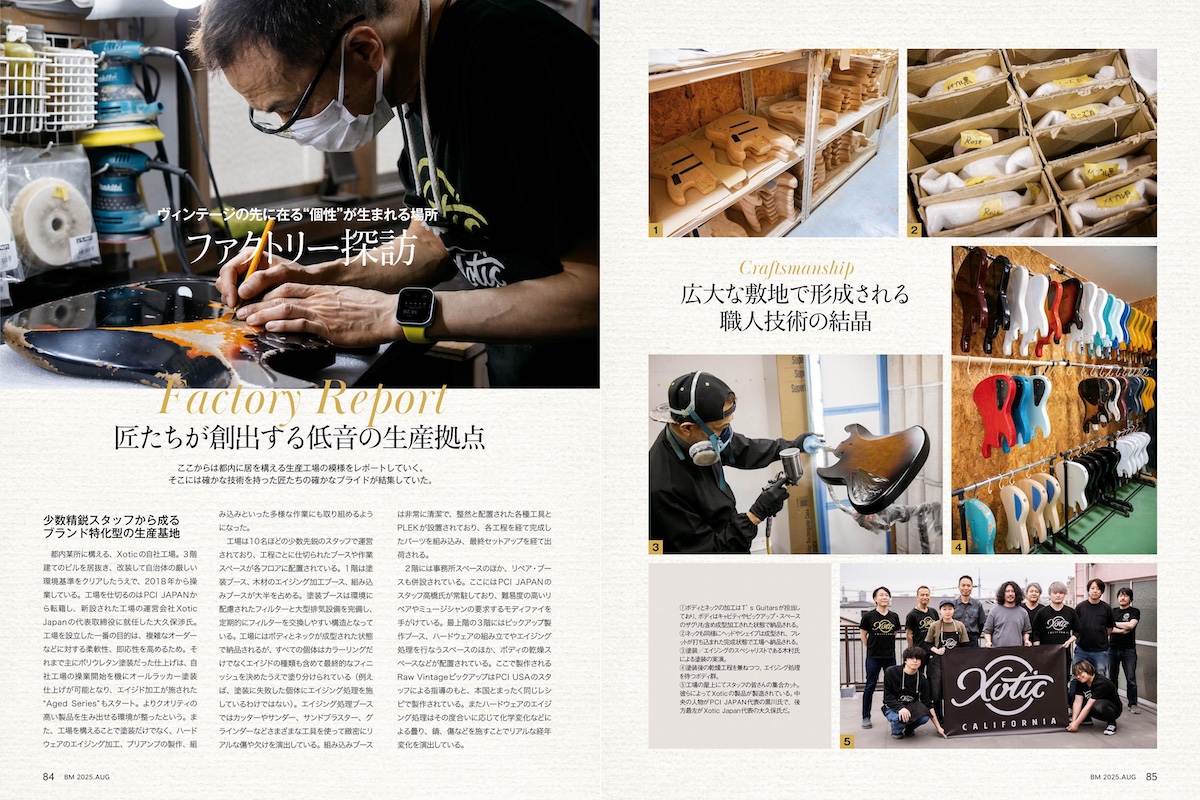
※”Subscription to our web service is required.”
※Product prices vary depending on specifications and options.
◎https://xotic.jp/

